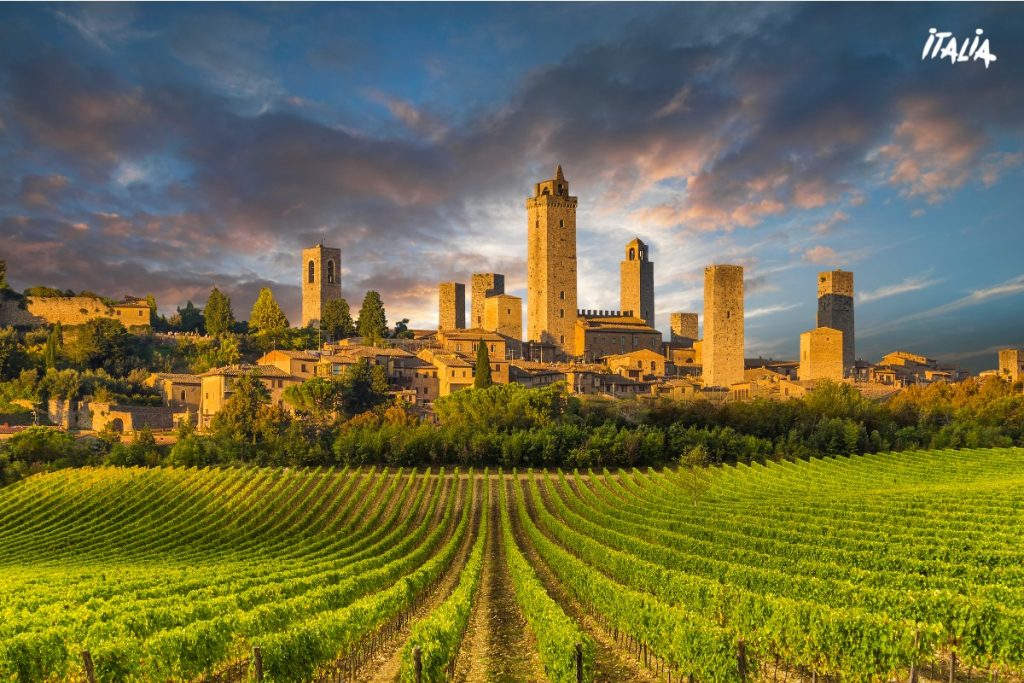
Travel Tips
All seasons are good for travelling in ITALY
From the flowers of the Ligurian Riviera to the Alpine snows, from the golden wheat fields of Apulia to the autumn sunsets in Rome, there is a never-ending succession of lights and colours as the sky and the sea, the isles and volcanoes, the lakes and the mountains offers an ever-changing spectacle. Naturally, the busiest tourist season is from June to September, but during the other months, the savvy traveller will find everything Italy has to offer.
SUMMER June – August
There are numerous beach resorts all along the Ligurian and Adriatic Rivieras, and magnificent beaches on the Tyrrhenian, Adriatic and Ionian shores and in Sardinia. At this time of year vacations in the mountains are particularly attractive at Alpine resort such as Ortisei, Cervinia, Cortina d’Ampezzo and in the Apennines at Abetone (Tuscany), Roccaraso (Abruzzo), Sila (Calabria) or on Mt. Etna in Sicily.
AUTUMN September – November
Autumn is particularly enjoyable in Merano and Bressanone in the Dolomites, on the lakes of Lombardy, in Rome, Apulia, on Italy’s beautiful islands and for visiting Italy’s many spas.
WINTER December – February
Winter is, of course, the winter sports season. Sports centres can be found not only in the Alps but also in many other parts of Italy such as: the central Apennines, on the Aspromonte in Calabria, and in Sicily. Winters are delightfully mild on the Ligurian and Neapolitan coasts and in Sicily. This is also the best time to visit the art cities and avoid the crowds.
SPRING March – May
Spring comes early in Italy and it’s the ideal time for holidays in locations such as Florence, the Gulf of Naples, the Sorrento peninsula, the Aeolian Island, Sicily and Rome.
Form of Government
At the end of World War II, Italy became a Republic with a parliamentary form of Government. The President, who is the head of the state, serves a 7-year term in office and may be re-elected.
Italy is divided into 20 regions, of which:
15 have an ordinary statute (a statute approved by parliament)
5 (Valle d’Aosta, Trentino-Alto Adige, Friuli-Venezia Giulia, Sicily and Sardinia) a special statute approved by a constitutional law.
Languages
Italy’s official language is Italian. But there is a vast linguistic diversity in this country that includes the use of dialects through the twenty regions in the country, such as Lombardic (in Lombardy), Roman (in Rome) and Calabrian (in Calabria) as well the use of other languages in areas that border with other states. These include German and Ladin in Alto Adige, French in Valle d’Aosta and Slovene in the northeast of Italy. Other languages such as Albanian, Greek are spoken in the south.
Although many dialects are spoken in everyday conversation, standard Italian is the national language of schools, juridical proceedings, media and is understood throughout the country.
Useful Telephone Numbers
• Emergency aid service 113
• Carabinieri (army corp which is also a police force) 112
• Fire Brigade 115
• Health Emergency 118
• Australian Embassy in Rome 06 852 721
• New Zealand Embassy in Rome 06 441 7171
• International code for Italy from Australia is 001139
• International code for Italy from New Zealand is 0039
• International code for Australia from Italy is 0061
• International code for New Zealand from Italy is 0064
Language History
Italian is a Romance language related to French, Spain, Portuguese and Romanian. Romance languages belong to the Indo-European group of languages, which include English. Indeed, as English and Italian share common roots in Latin, you will recognize many Italian words.
Modern literary Italian began to develop in the 13th and 14th centuries, predominantly through the works of Dante, Petrarca and Boccaccio, who wrote chiefly in the Florentine dialect. The language drew on its Latin heritage and many dialects to develop into standard Italian today.
Time Zone
Italy is in the Central European time zone (CET) equals GMT plus 1 hour. Summer time (+ 1 hour) is in force from the end of March until the end of September. However each year, from approximately the last week of March until the last week of October Italy adopts daylight saving time and advances the clock one hour. From the end of March until the end of October Australia is 8 hours ahead of Italy, while from the end of October until the end of March the time difference increases to 10 hours..


